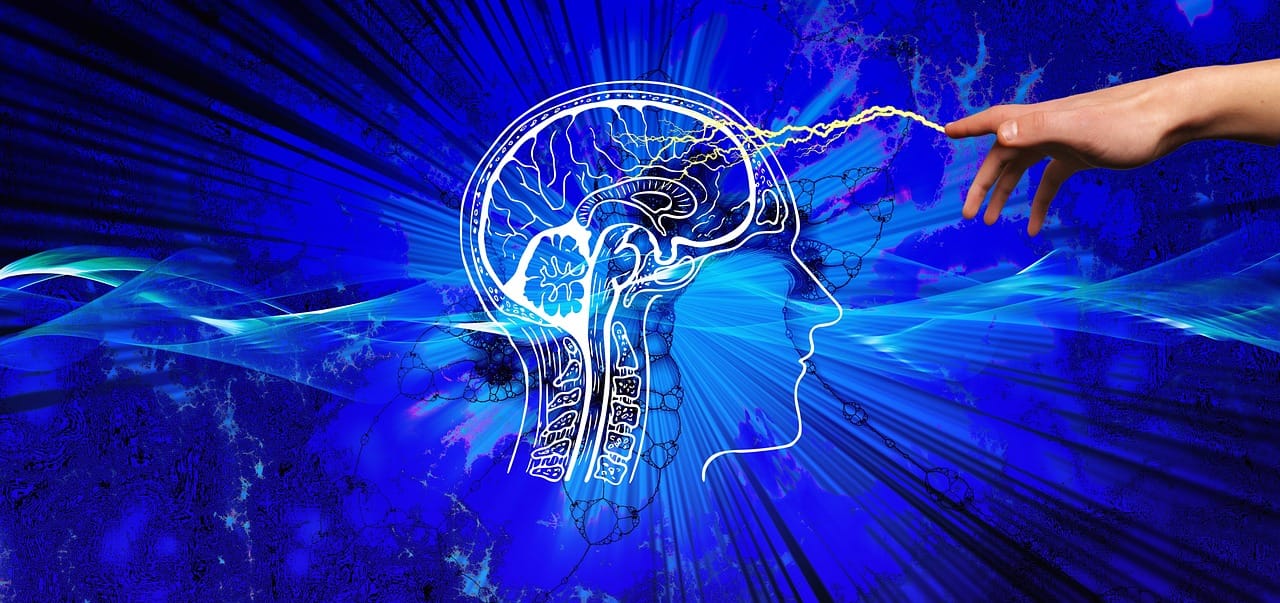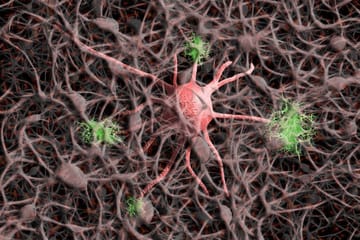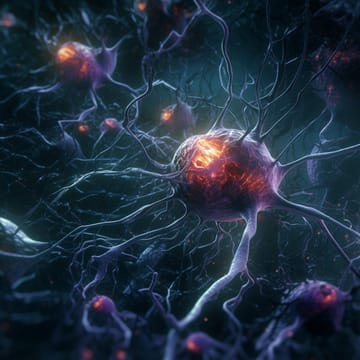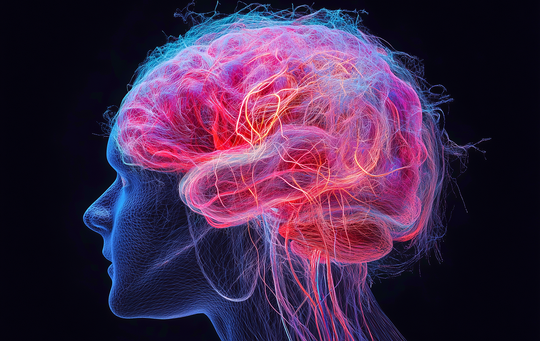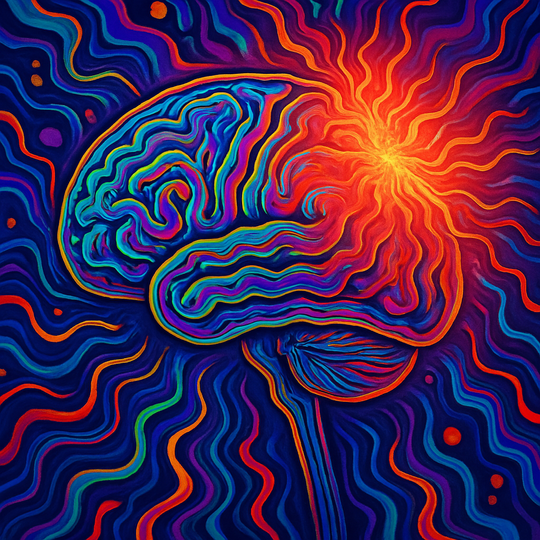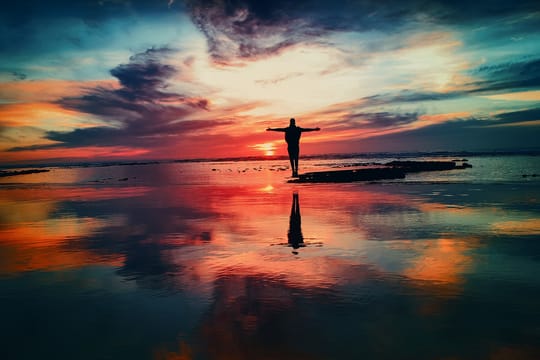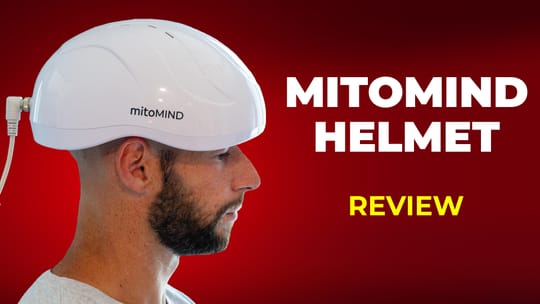So let's talk about red light therapy for concussion, or "traumatic brain injury" as it's called in the medical literature.
I'll consider all red light therapy for traumatic brain injury science in this article today. The good news here is that red light therapy can dramatically speed up recovery. I'll show you the scientific data in this article.
If you're short on time, just read the summary below. If you want my whole argument, however, then read the full article!
Let's start with my basic argument:
Traumatic brain injury (TBI) affects 70 million people annually. Falls and sports injuries are two major TBI causes. TBIs can be "mild", with concussions, to severe, where symptoms last longer and can even result in a tragic death. Even concussions can have wide-ranging symptoms, such as cognitive problems, physical issues, sleep problems, and emotional changes.
Recent scientific evidence shows that fundamental physiological changes occur after a TBI. These changes include (chronic) inflammation, blood flow problems, and changes in your brain signalling compounds ("neurotransmitters"). Simply put, your brain and body don't function as they should anymore!
TBI treatments do exist - such as physical therapy, rest, and pharmaceuticals - but these aren't bulletproof. Hence, better options are necessary. I consider some of these in the full article, such as creatine and, especially: red light therapy.
In current publications, red light therapy improves TBI at many different mechanisms. Mechanisms include inflammation of the brain ("neuroinflammation"), mitochondrial function (the energy-producing factories of your cells), blood flow, the creation of new brain cells, and so forth.
For TBI, both light therapy through the skull ("transcranial") and directly into the bloodstream ("intravascular") are promising. The human studies here show improvements in cognition, mood, sleep, and cerebral blood flow with minimal side effects. Red light therapy is also relatively affordable and should thus be used together with other therapies.
For the best results, I recommend early treatment--but make sure to talk to your doctor first! Supervision of medical professionals is essential here. In this article, I recommend the devices of Vielight, Neuronic, and SunPowerLED to mimic the devices used in the studies. Please read the full article to understand the details of my recommendations.
I do recommend you start slow with the brain treatment, even though some of the humans studies use quite a high dose and power output. The good thing is, that even in cases where symptoms have been present for quite some time, improvements seem to be possible with light therapy treatment.
Lastly, as always, more research on red light therapy for TBI is needed. But current publications are already promising! I'll keep track of these developments for you over time...
If you need an introduction to what these terms mean, check the following resources:
- What Is Red Light Therapy?
- Red Light Therapy Explained: Basic Terms Guide
- Start Here - Light Therapy 101 & Buyers Guide
- Red Light Therapy Dosing Chart: The Raw Data From Hundreds Of Studies
- Red Light Therapy Dosing: Why It's Complicated!
- Red Light Therapy Wavelengths Benefits: The Ultimate Guide
- How Often Should You Use Red Light Therapy Explained
These resources should give you a basic understanding of how red light therapy works, and the discussions around it!
The picture at the beginning of the article is AI-generated though!
Rethinking Brain Recovery: Traumatic Brain Injury Introduction
So let's consider some basic concussion and traumatic brain injury statistics:
Basic Concussion And Traumatic Brain Injury Statistics
Just under 1% of the global population has a traumatic brain injury each year (1). That's 70 million people. In developed nations such as the US that number is slightly lower, at 0.7% per year (2). About 10% of the traumatic brain injuries lead to direct hospital visits.
A small percentage of traumatic brain injury (or "TBI") even leads to death (3). In the US, falls make up almost half of the causes of TBI (4). Hence, it's easy to understand that TBI risk goes up as you age!
However, younger people, such as kids and teenagers, also have a higher TBI risk (5). And, athletes are at risk, with up to 10% of athletes getting a TBI yearly (6).
Not all TBIs are the same–they range from mild traumatic brain injury ("concussion") to a severe TBI, which is far riskier. Most TBIs are mild, fortunately. If you're in bad luck, however, your TBI symptoms can persist longer. If symptoms last longer than three months, you've got Post-Concussion Syndrome (7). And with symptoms lasting even longer, you can end up with Persistent Post-Concussion Syndrome (PPCS) (8). Different names for these syndromes exist–what's important to realize here is that symptoms can last a long time.
Some people live with persistent problems after a traumatic brain injury. There's not just the disability risk; severe TBIs also have a high risk for mortality (8). That risk is present directly after the accident as well as in the longer term–up to a decade–if problems persist (9).
Even young people can be affected. Contact sports are the most considerable risk here. So if you're playing soccer, football, or martial arts as a youngster, your risk for concussions and TBI goes up dramatically (10; 11).
Next up, let's consider what the latest research says about both conditions:
The Latest Scientific Concussion Reviews
I've selected scientific reviews - which analyze and integrate previous high-quality evidence on a topic - from the last five years. A recent review describes the basics of what happens in your brain after a concussion in great detail (12):
"After a concussion, a series of complex, overlapping, and disruptive events occur within the brain, leading to symptoms and behavioral dysfunction. These events include ionic shifts, damaged neuronal architecture, higher concentrations of inflammatory chemicals, increased excitatory neurotransmitter release, and cerebral blood flow disruptions, leading to a neuronal crisis."
Hence, there's real physical damage to the brain after a concussion. And, depending on how bad the concussion is, the healing process will take a while. Yes, you can't see the damage directly in most concussions like you would be able to see after breaking an arm or a leg. However, the damage is there at many levels, such as inflammation, different brain signalling compound levels ("neurotransmitters"), blood flow disruptions, and damage to brain cells.
And while most concussions resolve themselves automatically over time, because of proper repair mechanisms and limits to the damage, that's not always the case. Another group of researchers writes:
"[The concept of persistent symptoms after concussion] emphasizes the fact that most persistent symptoms have their basis in complex somatic, cognitive, psychiatric, and psychosocial factors related to risk and resilience. This framework leads to the important conclusion that concussion is a treatable injury from which nearly all patients can be expected to recover." (13).
That conclusion is both positive and negative. The good thing is that concussions are better understood nowadays, and their trajectory is somewhat easier to measure.
Loads of different symptoms can occur after a concussion that's almost too hard to summarize. Different people also respond differently to concussions (14; 15; 16; 17; 18). Not all concussions are the same, obviously, as different brain regions can be affected! So a concussion to the back of your head can have different symptoms than that to the sides (the "occiput").
Post-concussion symptoms can be divided into four categories of symptoms, broadly speaking:
- Cognitive problems - here you can think about brain fog (slow thinking), lower focus, problems with your memory, more frequent fatigue, and so forth.
- Physical symptoms - such as nausea (keep in mind that your brain and gut are related), fatigue, balance problems, visual alterations, dizziness, and headaches. Athletic performance can go down dramatically too
- Changes in emtions - such as anxiety, depression, an altered personality, etc.
- Sleep issues - such as more sleeping, or very poor sleep, or disruptions in the day and night cycle ("circadian rhythm"). Alternatively, you can just be tired all the time!
The problem is that concussion symptoms are still somewhat subjective (19). So unlike epilepsy or a stroke or Alzheimer's in the brain, which are undeniable in its effects, there's no gold standard for measuring concussion intensity! MRI and CT scans for the brain cannot detect a concussion. Standard tests rely on self-reported statements about how bad the symptoms are or how long someone was unconscious. The longer-term "persistent symptoms after concussion" is therefore also difficult to measure, currently (19).
Lots of treatment options for concussion are also available (20):
"The use of osteopathic manipulative medicine (OMM), pharmacotherapy, hyperbaric oxygen therapy (HBOT), aerobic exercise, balance, and/or vestibular therapy are many common treatment approaches for concussion and post-concussion sequelae."
Creatine supplementation is another very promising recent intervention (21). Physical activity is very promising too (22). Cognitive training and psychological coaching ("Cognitive Behavioral Therapy") may help too (23). So fortunately, treatment options are developing quickly!
Blood flow, glucose use in the brain, and inflammation levels may be used in future imaging for determining concussion intensity and duration (24).
Traumatic Brain Injury Reviews
Next up, some recent data on traumatic brain injuries from reviews. Moderate and severe TBIs often have similar symptoms as concussions, but also more intense ones and additional symptoms.
Here's the difference:
- Moderate and severe TBIs can show brain alterations on brain imaging.
- Cognitive symptoms may be more impaired, such as problems speaking, or poor planning or overall lower brain function.
- Physical condition may go down more
- Depression and anxiety can be extremely common.
- Speech may be impeded like after a stroke
- The nervous system can be impacted, resulting in problems regulating blood pressure, or intense sweating, or changes in body temperature.
Blood flow in the brain and its metabolism lie at the heart of understanding moderate and severe TBI right now (25). Severe TBIs (sTBI) often have long-term impacts on health, as a review states:
"1. Expectation of long-term outcome is an important factor in treatment decision-making for patients with severe traumatic brain injury (sTBI). 2. Favourable outcome and full recovery after sTBI are possible, but mortality and unfavourable outcome rates are high. 3. sTBI survivors are likely to suffer from a wide range of long-term consequences, underscoring the need for long-term and multi-modality outcome assessment in future studies. 4. The quality of the scientific literature on long-term outcome after sTBI can and should be improved to advance treatment decision-making." (26).
Hence, new treatment options are needed here! Early treatment is super important here, just like with a stroke (26; 27; 28). Loads of non-pharmacological interventions are available too that I won't go into in detail here - just know that options are available (29; 30)!
I hope you understand the basics here! Concussions and moderate to severe TBIs need more treatment options. And, fortunately, there's recently been tons and tons of research on red light therapy for the brain.
I'll explore that topic in the next section:
The Science Behind Red Light and Brain Healing
I've recently written many articles on red light therapy for the brain. These are:
- Red Light Therapy For Upgrading Your Brain Health
- Red Light Therapy For Parkinson's Disease: A Hopeful Strategy!
- Red Light Therapy For Epilepsy: Current Science Explained
- Red Light Therapy For Fibromyalgia: Incredible Pain Relief & Much More!
- Red Light Therapy For Sleep: The Science of Sweet Dreams
- Red Light Therapy For Neuropathy: The Promising Science
- Red Light Therapy For Migraines 101: Why The Research Is Super Promising!
- Red Light Therapy For Depression: A Potential Solution
For some of these conditions, current evidence is extremely promising - fibromyalgia and Parkinson's Disease are examples there. Yes, in all of these cases, more research is needed, but in some of these instances, the early human intervention studies show life-changing results.
For other issues, such as epilepsy, human research is currently absent. And, for depression, sleep quality, migraines, and a few different topics, the science shows very good results across the board, but no life-changing effects.
So, the question is, what does red light do to your brain? Does red light therapy for brain inflammation work, and so forth? Here are some basic effects of red light therapy for the brain. Loads and loads of studies have been published on "photobiomodulation for the brain", or, in standard terms, "red light therapy for the brain" (31; 32; 33; 34; 35).
There's tons of discussion on the exact mechanisms of red light therapy for the brain, but here are a few (31; 32; 33; 34; 35):
- Activation of the mitochondria of the brain. The commonly accepted mechanim here is "Cytochrome C Oxidase (COO)". Mitochondria are the energy-generating factories of your brain.
- Lower brain inflammation, called "neuroinflammation". Pro-inflammatory biomarkers generally go down and anti-inflammatory biomarkers go up. Chronic inflammation is intertwined with many chronic diseases, including neurodegenerative ones!
- Enhancement of brain blood flow. This one is simple to understand, but somehow, if you shine the correct light on the brain, blood flow improves! Nitric Oxide (NO) release is the most commonly accepted mechanism here, which dilates blood vessels.
- Healthier Reactive Oxygen Species (ROS) levels. ROS are a byproduct of energy production. Excessively high levels incude aging, but you also need ROS for adaptation!
- Creating new brain cells and connections between cells. Levels of "brain-derived neurotrophic factor" (BDNF) are responsible here, as well as other growth factors. These growth factors are routinely induced by applying red light therapy to the brain!
Well, do these effects seem good? Yes, you can even argue that the combination of these mechanisms seems great, from a concussion and traumatic brain injury perspective. With these conditions, blood flow is impeded and inflammation and ROS levels go up. The BDNF helping create new brain cells and synapses may be great in case of TBI!
Next up, let's look at the science on this topic:
Red Light Therapy For Concussion And Traumatic Brain Injury: Healing Beyond the Surface
Next up, let's consider the red light therapy for traumatic brain injury and concussion studies. I'll only include human studies here, as there are quite a few animal studies but these aren't as directly informative as the human ones. I've used Vladimir Heiskanen's Excel sheet that categorizes all red light therapy studies out there for this task (36).
Human Studies
First up, let's consider all human publications on this topic:
- First, a study with mild TBI (concussion), where LEDs were used for light penetration through the skull ("transcranially") (37). There were 18 sessions over six weeks, so that's three weekly sessions. Only two out of nine participants improved on neurocognitive testing. The big downside of this study is that none of the treatment parameters are supplied!
- Then, another study, this time on moderate TBI (38). Here's the outcome of the study:
" Despite the small sample size, the change in [Resting State Functional Connectivity (RSFC)] from the acute to subacute phases of recovery was greater in [red light therapy]-treated than sham-treated participants, suggesting that acute-phase [red light therapy] may have an impact on resting-state neuronal circuits in the early recovery phase of moderate TBI."
- Resting State Functional Connectivity (RSFC), here refers to how different regions of the brain communicate with each other when a person is not performing any specific task. So you're just resting, awake, and relaxed. RSFC is often impaired in brain conditions, and also aging! Again, not too much info on how the treatment proceeded in this study, once again!
- Then, a 633 nm study that's directly into the bloodstream ("intravascular") (39). This methodology is generally very hard to perform by yourself as you'd need a nurse, generally, to redirect the bloodflow from a blood vessel for light therapy treatment. Here, the effects of Crossed Cerebellar Diaschisis, where one part of your brain doesn't work well anymore, was reversed with light therapy treatment. However, cognitive function didn't improve!
- Next up, a study using different devices that emit 810, 850, and 870 nm light (40). The application was transcranially ("through the skull") again. Four football players with possible Chronic Traumatic Encephalopathy, which is often the case with head injuries. The players received the light three times weekly for six weeks and improved overall. These were older football players, with 50+ years of age! Here you can see the treatment in the study (41):

- As you can see, there are some of the preliminary Vielight devices used there as well as helmets similar to the Neuronic offerings. Cognitive tests improved and overall brain health did too. I'll come back to these devices later on!
- Then, a study with a 1,064 nm helmet at a very high 250 mW/cm2 power output level in 11 people with TBI (42). The dose was 40 J/cm2 which is moderate to high. There was one weekly treatment for eight weeks. Here's what researchers write:
"All patients enrolled in this study protocol were able to tolerate the study procedures without any [Adverse Events]s or [Serioius Adverse Events]. Nine out of eleven participants had clinically significant improvements in [the participant´s rate of improvement] score (≥ +2)" (43)
- So, the improvement was very good here. It's also good to see that higher power outputs of light are tolerated really well here.
- Furthermore, another intravascular ("directly into the bloodstream") study with 633 nm light finds good improvements (44). The light protects against carbon monoxide intoxication, which plays a role after traumatic brain injury (just as other brain systems), such as the glutamate system.
- Next up, another human study using 810 nm light through the skull in 68 patients with moderate traumatic brain injury (45). There were no reported side effects and the results were good on biomarkers for brain health. Here, researchers measured "Radial diffusivity", "mean diffusivity", and "fractional anisotropy", which are more subtle biomarkers to measure brain aging and damage. These biomarkers can be measured before damage shows up on classical scans, such as a CT or MRI scan. Symptom severity after a concussion or TBI, as measured by the Rivermead Post-Concussion (RPC) questionnaire, also improved! So, all great here! There were three treatments with at least a 12-hour rest interval. Here you can see the difference between the placebo and intervention on the RPC test (46):

- These results are pretty dramatic for just a few treatments.
- Next up, there's a 630 nm study where the light is emitted through the skull (47). Cerebral blood flow improved, which increased brain oxygenation, which, in turn, improved brain function. Here you can see the increases in blood flow in the left and right parts of the brain (48):

- Unfortunately, the study didn't really track the outcomes over time. Treatment was 3X per week for three weeks!
- Another study also measured cerebral blood flow, after transcranial treatment with 630 and 810 nm, at a whopping 6.4 mW/cm2 for 7.7 J/cm2 (49). That's a low dose and low power! Cognitive function and cerebral blood flow improve years after getting the TBI - implying once again that light therapy treatment, even though the TBI may not be current, is worthwhile! There were 18 treatments over three weeks in this study.
- One more study uses 810 and 980 nm light for 20 treatments over two months (50). This is a case report with only one participant though and the study has some downsides such as misreported power output numbers (likely!). Here's the very exciting outcome though, described in the study:
"In this case report, a patient with moderate TBI documented in anatomical magnetic resonance imaging (MRI) and perfusion single-photon emission computed tomography (SPECT) received 20 NIR treatments in the course of 2 mo using a high-power NIR laser. Symptoms were monitored by clinical examination and a novel patient diary system specifically designed for this patient population. Clinical application of these levels of infrared energy for this patient with TBI yielded highly favorable outcomes with decreased depression, anxiety, headache, and insomnia, whereas cognition and quality of life improved." (50).
- SPECT here measures blood flow in the brain (50). The results seem extremely promising across the board, though!
- Another study includes 11 human participants who use 633 and 870 nm light in chronic, mild TBI (51). The dose was 13 J/cm2 with 18 treatments over six weeks. Results, again, were extremely positive, with researchers writing:
"Participants reported improved sleep, and fewer post-traumatic stress disorder (PTSD) symptoms, if present. Participants and family reported better ability to perform social, interpersonal, and occupational functions. These open-protocol data suggest that placebo-controlled studies are warranted." (51).
- Then, another case report with only one participant (52). The total dose is 20 J/cm2, 850nm was used, and only 23 LEDs, transcranially. Cerebral blood flow improved, as did neurological symptoms, in a patient who was in a vegetative state, unfortunately! This is a longer-term study, though, with tons of treatments!
- Lastly, one study uses 633 and 870 nm light in a case study again (53). Cognition improves, the light therapy can be applied at home, and the therapy reduces the overall cost of TBI treatment.
Red and near-infrared light therapy for TBI has few effects, although there are not many studies for very acute and more dangerous cases. However, in the long run, it does seem that even higher-powered applications work well for TBI that has been present for a while!
The big downside here is that we don't have many higher-quality studies. Longer-term high-quality studies are also not available (and would be extremely costly to create!). And, as always, study setups vary quite a bit, ranging from intravenous light therapy at 633 nm to a 1,064 high-powered helmet, to 810 nm light applied transcranially, but all of these seem to work well!
Reviews On Red Light Therapy For TBI
Lastly, let's consider a few reviews on red light therapy for TBI. These reviews–as stated before–analyze and integrate previous high-quality research on a topic. I'm choosing the most recent reviews published on this topic.
First up, there's a review from 2024. Here's what reviewers write, which aligns with my conclusion more or less:
"The outcomes in human clinical studies are then reviewed. The findings support [red light therapy] potential for treating TBI, notwithstanding variations in parameters such as wavelength, power density, dose, light source positioning, and pulse frequencies. Emerging data indicate that each of these parameters plays a role in the outcomes. Additionally, new research into [red light therapy]'s effects on the electrical properties and polymerization dynamics of neuronal microstructures, like microtubules and tubulins, provides insights for future parameter optimization. In summary, transcranial [red light therapy] represents a multifaceted therapeutic intervention for TBI with vast potential which may be fulfilled by optimizing the parameters." (54)
What surprises me a bit is that the researchers are even more positive than I am about the available evidence. Usually, it's the other way around, as researchers want more high-quality studies with similar setups in most cases before drawing any strong conclusions.
So kudos for the researchers above!
Then, an exciting review from 2022 on animal research (55). Keep in mind that I haven't included that animal research in my article, but often, it can provide new information that's insightful. Here's what researchers write on the animal research - this research is also on acute TBI (55):
"For pre-clinical [a.k.a. animal] studies, [statistical] meta-analysis for [Neurological Severity Score] and lesion size were found to favor intervention versus control. Subgroup analysis based on [red light therapy] parameter variables for these outcomes was performed. Favorable parameters were identified as: wavelengths in the region of 665 nm and 810 nm; time to first administration of [red light therapy] ≤4 h; total number of daily treatments ≤3. No differences were identified between pulsed and continuous wave modes or energy delivery. Mechanistic substudies within included in vivo studies are presented and were found to support hypotheses of antiapoptotic, anti-inflammatory, and pro-proliferative effects, and a modulation of cellular metabolism. This systematic review provides substantial meta-analysis evidence of the benefits of [red light therapy] on functional and [cellular] outcomes of TBI in in vivo mammalian models."
Yes, that's complicated writing. The good news here is that even with acute TBI, the animal studies show good effects if they are treated within 4 hours after the TBI occurs. The light also prevents cells from dying in these animal studies ("antiapoptotic"), lowers inflammation, and aids cell growth and multiplication ("pro-proliferative").
All of these outcomes are very good for TBI. The most recent reviews thus more or less align with my analysis of light therapy for TBI.
That's something I'm very happy with!
Lastly, let's explore another important topic:
Best Devices For Red Light Therapy For TBI
Sure, here there are many remaining questions, such as:
- "How to use red light therapy for brain concussions?"
- "What is the best red light therapy for brain concussions and TBI?"
- "How to use red light therapy for brain TBI if it's chronic?"
Based on the research I've posted above, I'm more comfortable recommending red light therapy for TBI if it's a chronic case. In case of acute TBI, where you're in the hospital or at home under medical supervision, I don't have any recommendations right now, due to the risk involved.
So let's explore devices for TBI:
Here are the best red light therapy devices for TBI from different companies. Most of these have been reviewed by my friend and the founder of this company, Alex Fergus. Check the YouTube videos below.
I've selected these devices because they most closely resemble the devices used in the studies I've analyzed above. So, Vielight which is considered below, has transcranial devices that are high-powered, and, systemic (such as "intravascular") devices such as the MIP.
Check the review below:
The Vielight Duo is probably your best bet there–or the MIP! Use discount code ALEX10 if you're interested in the device.
Vielight offers much higher power output at critical structures of the brain. The intranasal MIP device has the considerable advantage of irradiating blood flow in the nose. That way, you're much more likely to get good treatment for the overall brain, inflammation, cognitive performance, and overall bodily health. The blood of the brain passes by your nose, so irradiating that nasal area is a natural way at which you can influence brain health!
Moreover, you may also want to check out this interview on Vielight:
Then, you may want to consider the Neuronic Neuradiant 1070 helmet described here:
Neuronic has recently upgraded its helmet to a new model with more powerful LEDs and a lower price.
If you grab a Neuradiant 1070, use discount code ALEXF5 - again we get a commission on these and you get a discount! I'd say, however, that the Neuronic is a bit underpowered compared to the TBI study where 250 mW/cm2 was used as a dose.
Yet, for a very gentle treatment, the Neuronic is great.
Lastly, I recommend considering the SunPowerLED helmet - Alex Fergus has interviewed the founder in this video below and they've got great results with the high-powered helmet specifically for brain trauma and TBI:
To order from SunpowerLED, use discount code ALEX5 and the following link.
The SunPowerLED and Vielight devices are probably my top picks for long-term TBI. Again, if you've got an acute concussion or TBI, consult your doctor first before using any light therapy treatment!
My recommendation is to take it very slow with treatment, however! Really observe closely how you respond to the red light therapy first and monitor your outcomes. Over time, you can increase the treatment period (and thus the total dose!).
If you're interested in sharing your results, then just join our Facebook group as well - I'm very curious to hear about the results you're having on this topic:
Conclusion: The Future Is Bright For Reversing Brain Trauma
Whether it's transcranial red light therapy or intravenous light therapy, many of these options have shown very promising results for TBI!
Yes, we need a lot more research. However, given the exciting 10+ human studies that have emerged on this topic, paired with very promising animal research, TBI treatments are poised to be changed over time.
Why?
Simple: red light therapy for concussions and TBI is extremely affordable, and, yields some very good effects in some studies. Sure, the effects may not be life-changing immediately, such as with fibromyalgia, but generally, the results for TBI are very good.
And, likely, it's to be expected that with longer-term treatment, which hasn't even been reearched in any good detail yet, you'll get even better results! So I'm very happy with my breakdown of the science on this topic!
Lastly, what's also amazing is that all of the studies have positive outcomes, and none of them show any serious side effects!
Frequently Asked Questions
Lastly, I answer a few frequently asked questions on this topic:
Can Red Light Therapy Improve Cognitive Function After An Injury?
Yes, red light therapy can help improve cognitive function after a brain injury. I especially recommend treatment after longer-duration TBI. For acute problems, consult your physician!
Is There Clinical Research Supporting Red Light Therapy For TBI?
There are 10-15 studies on red light therapy for TBI, which are all positive. How many studies there are depends on how you could - i.e. whether you want to include case studies too. The preliminary evidence is extremely positive though!
Items Mentioned In This Article
- Vielight MIP and Vielight Duo - use discount code ALEX10
- Neuradiant 1070, use discount code ALEXF5
- SunPowerLED - use discount code ALEX5
This is a post by Bart Wolbers of Lighttherapyinsiders. Bart finished degrees in Physical Therapy (B), Philosophy (BA and MA), Philosophy of Science and Technology (MS - with distinction), and Clinical Health Science (MS), has had training in functional medicine, and is currently chief science writer.
Found This Interesting? Then You Might Like:
- Discount Codes, Deals & Recommendations - Red Light Therapy
- Red Light Therapy For Parkinson's Disease: A Hopeful Strategy!
- Red Light Therapy For Epilepsy: Current Science Explained
- Red Light Therapy For Fibromyalgia: Incredible Pain Relief & Much More!
- Red Light Therapy For Upgrading Your Brain Health
- Red Light Therapy For Sleep: The Science of Sweet Dreams
- Red Light Therapy For Neuropathy: The Promising Science
- Does Vielight Work? A Close Look At The Spectacular Vielight Science
- Red Light Therapy For Migraines 101: Why The Research Is Super Promising!
- Red Light Therapy For Depression: A Potential Solution

